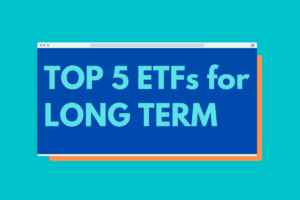Whenever the phrase “investing in the stock market” is said people tend to get scared and uneasy. Yes, the value of what you invest in your money in can go up sometimes and can go in the opposite direction. However, go look at the history of the US stock market and you’ll notice that the market over 30+ year stretches always ends in positive returns.
Even if you have your own business owning a part of the stock market is something you can do with little effort and keep your investment portfolio diversified. In fact one of the greatest buckets of wealth to add to your portfolio is one that involves the stock market. With the stock market you are able to generate wealth from both taxable and tax-deferred accounts. In a previous article I talked a lot about the different ways you can save for retirement and I want to talk about what makes investing so awesome.
Investing boils down to three main factors that you can control to a certain extent. These three factors are a) Amount of money you invest b) Return of your investments and c) Time you invest. This is what I call the A.R.T. of investing. Amount. Return. Time. I’m going to do my best to break down the importance of each factor and hopefully by the end of this article you will have learned just how crucial each of these factors really are.
Amount of Money You Invest
The problem with how much we save and invest for our future is that it’s never enough. The stats and facts show the average person simply does not have anything to show for his or her 20-30 year working career. I’ll always remember the advice I received when I started saving for retirement: “Save as much until it hurts!”
And for the most part this advice has worked out well for me. How much you save and invest is one part of the equation that leads to financial independence. Simple math shows the more you save today, the more you will have for later. You’ll hear people give the advice of to invest up to the match in your retirement accounts or about 10-15% of your income. My advice is to contribute MORE than just the match or 15%.
As of 2018 the government allows individuals to save $18,500 in pre-tax accounts and that limit is going up $500 in 2019 to $19,000. So the 3-6% match at your job won’t cut it. Try to save at least 20% of your income and if you can do more that’s even better. My goal is to hover around the 30-50% range of my income. Like I mentioned before, the more the better!
I’ll always remember the advice I received when I started saving for retirement: “Save as much until it hurts!”
Return of Money You Invest
You’re probably thinking, “Matt how in the world can you control the return of an investment?” Well, technically you can’t on most asset classes like bonds, stocks, REITs, and mutual funds, but you can use historical data to make sound decisions that will yield higher returns. For example, when you invest in a total stock market index fund you can be sure that volatility will be high. This means the value of that fund will go up and down as you hold on to it over the years. History tells us that stocks and mutual funds have the probability to provide higher returns on your money. But, I’m not here to tell you to invest in stocks. You know my investing philosophy revolves around mutual funds and more specifically index funds. I love the total stock market fund from Vanguard, Fidelity and Charles Schwab.
What about bonds, CDs, high yield savings accounts? Well these asset classes do provide lower returns, but the volatility is lower and you can expect some kind of return over the long term. I definitely keep some of our investing money in a high yield savings account, especially now in December 2018 where you can earn 2% on many high yield savings accounts with companies like American Express, Ally and Synchrony just to name a few.
The point here is you control what asset class you invest your money in and whether you choose stocks, bonds, REITs, CDs and so on. Whatever you choose, the key is diversification. Make sure you stay diverse with your investment strategy and adjust your risk according to your comfort level. You don’t want to be all in on stocks if you aren’t calm when your investment portfolio decreases by 50%!
The point here is you control what asset class you invest your money in…
Time You Invest
Other than the amount of money you invest and the return of your investments the final part of the A.R.T of investing has to do with time. Bottom line: the earlier you start the better. Even if you just start putting $25 or $50 per month away in a retirement account you will be better off 30 years from now than the majority of society. Time can be you greatest ally or your greatest enemy. Let’s look at this example of two investors who are the same age, but start investing the same amount of money at different times in their lives.

You see how much more Mark has than Luke at the age of 50? All because Mark decided to start investing $100 per month at the age of 20 instead of the age of 30. 10 years makes a huge difference! In this case the difference was $150,111.91. What’s even more remarkable is that Mark only had to dedicate $12,000 in that first 10 years to get that difference!!!
…because Mark decided to start investing $100 per month at the age of 20 instead of the age of 30. 10 years makes a huge difference! In this case the difference was $150,111.91.
Time matters. Return of your investment matters. The amount of money you invest matters. If I had to prioritize in order of these three key factors I would put Time first, then Return and finally Amount. Essentially, A.R.T backwards, T.R.A. Ultimately, you need to understand the importance of investing for you future. Don’t let the money get spent on things you don’t need just so you can impress people who don’t care or you don’t even like. Your future matters and having the A.R.T of investing in your brain is what will help you achieve the financial freedom you desire.
What are some important factors of investing that you would like to add? Please comment below!



